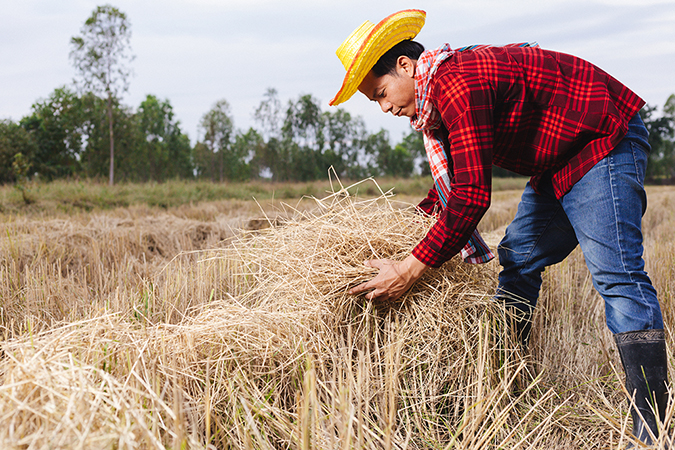The Department of Agricultural Extension is driving the Thai Rice GCF project, preparing to teach farmers climate-smart rice cultivation methods and introducing 10 techniques for climate-friendly rice farming.
Mr. Peeraphan Kothong, Director-General of the Department of Agricultural Extension, stated that the department is collaborating with relevant agencies to implement the project “Enhancing Climate-Resilient Rice Cultivation: Thai Rice GCF”, aimed at strengthening the capacity of 253,400 smallholder farmers across 21 provinces to cope with climate change.
The project follows a bottom-up approach, beginning with farmers adjusting cultivation practices and participating in the program, which applies Climate Smart Agriculture (CSA) technologies. The initiative is expected to reduce cumulative greenhouse gas emissions by 2.6 million tons over five years (January 2024 – December 2028).
A workshop has been held to design a knowledge transfer curriculum for rice farmers, integrating agricultural extension with business and market strategies (Extension x Business Model Canvas). The curriculum will be used by officials from the Rice Department, Department of Agricultural Extension, and the Bank for Agriculture and Agricultural Cooperatives (BAAC) to train farmers.
10 Climate-Friendly Rice Cultivation Methods
- Weather Forecast Advisory Services (WFAS): Use weather forecasts to plan planting schedules, reduce risks, lower costs, and improve yields.
- Farm-level Water Management (FWM): Optimize irrigation; for irrigated areas, separate inlet/outlet water to prevent salinity intrusion, and for rainfed areas, create water storage for dry spells.
- Rice Variety Identification (RVI): Select rice varieties suited to local conditions, resilient to pests, diseases, and seasonal climate variations, with high yield and market demand.
- Laser Land Levelling (LLL): Level uneven rice fields for uniform planting and better water management.
- Dry Direct-Seeded Rice (DSR): Sow seeds directly in the field before the rainy season to save labor, reduce costs, and shorten planting time.
- Integrated Pest Management (IPM): Use multiple pest control methods to maintain ecological balance and reduce chemical usage.
- Alternate Wetting and Drying (AWD): Manage water levels periodically to lower methane emissions and strengthen rice against brown planthopper infestations.
- Site-Specific Nutrient Management (SSNM): Apply fertilizers according to soil tests and plant needs to reduce nitrous oxide emissions and production costs.
- Straw and Stubble Management (SSM): Recycle residues by plowing them into the soil or compressing into feed blocks to improve soil organic matter and provide livestock feed.
- Crop Diversification and Rotation (CDR): Rotate crops based on soil and water conditions to maintain income streams and protect the environment.



